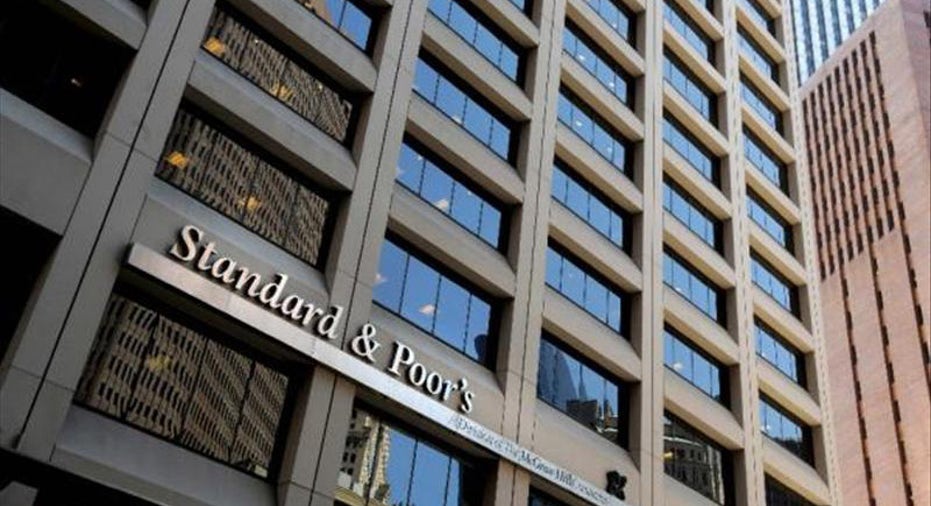S&P Cuts Ratings on France, Italy, Other European Countries

Standard & Poor’s on Friday downgraded the debt of nine European countries, including France and Austria, two large economies which until recently were thought to be strong.
Germany, by far the healthiest economy in Europe, was not included in the downgrades.
The move by S&P, rumored for weeks, is being viewed as the latest troubling development in the long-running European sovereign debt crisis.
Difficulties that began more than two years ago in Greece and were initially viewed as a problem that could be contained to smaller, less significant economies in Ireland and Portugal, have now spread to once-thriving economies.
Europe’s leaders have been criticized for months for not taking decisive action to stem the crisis and S&P echoed that criticism.
“In our view, the policy initiatives taken by European policymakers in recent weeks may be insufficient to fully address ongoing systemic stresses in the eurozone,” S&P said in a statement announcing the downgrades.
S&P also criticized European leaders for in S&P’s view misidentifying the crisis as one stemming solely from the "profligate" fiscal policies of “peripheral countries” such as Greece, Italy and Portugal. In reality, the problems are far more systemic and won’t likely be fixed by austerity measures alone, according to S&P.
S&P lowered by one notch the long-term ratings on Austria, France, Malta, Slovakia, and Slovenia, and by two notches ratings on Cyprus, Italy, Portugal, and Spain. The ratings firm affirmed long-term ratings on Belgium, Estonia, Finland, Germany, Ireland, Luxembourg, and the Netherlands. Each of the countries has been removed from S&P’s CreditWatch, where they were placed with “negative implications” in December.
France and Austria had their credit downgraded a single notch, from the coveted AAA rating to AA+.
U.S. markets fell Friday as investors awaited the announcement. The Dow Jones Industrial average, down more than 150 points early in the session, fought back and closed down 48.96, or 0.39%, to 12,422.06.
The ratings cut means it will be more expensive for all of the impacted countries to borrow money. That's because a lower rating means S&P has deemed that the borrower poses a bigger risk.
French Finance Minister Francois Baroin said in a television interview in France that the downgrade was “no catastrophe.” The move was widely expected, he said, adding, “It's only half a surprise.”
In December, citing “systemic stresses” to the European financial system, S&P placed the ratings of 15 eurozone countries, including France and Germany, on credit watch negative and warned of downgrades if European leaders remained ineffective in their efforts to quell the debt crisis.
Peter Tchir, an analyst with TF Market Advisors in Connecticut, said Friday the downgrades are likely to have a significant impact on global markets despite the move being widely anticipated.
“I think this is a bigger deal than people are making it out to be,” he said.
Tchir said he’s concerned that the downgrade of France means that any bailout mechanism created in Europe in recent months to stave off default by troubled economies has also been downgraded. Those bailout mechanisms are heavily dependent on France and other relatively healthy eurozone economies.
Specifically, the European Financial Stability Facility, a bailout fund financed by members of the eurozone, is authorized to borrow up to 440 billion euros to help countries struggling with heavy debt burdens and threatened with default. Friday's credit downgrade that will make it more expensive for France to borrow will also make it more expensive for the EFSF to borrow.
France is the second-largest guarantor of the EFSF, which currently has a AAA rating, according to Reuters.
Tchir said markets shouldn’t be surprised by the move. Since the downgrades were first rumored last fall Europe has taken few significant steps toward a resolution of the sovereign debt crisis. To the contrary, dithering and squabbling among Europe’s political leaders has allowed the problem to spread and intensify.
“Very little progress has been made, and lots of negatives have come out,” said Tchir.
S&P apparently agrees with that assessment. In its statement, the ratings firm essentially dismissed an agreement reached at a summit meeting in December which called for a continent-wide agreement to unify austerity and reform efforts in Europe. S&P said the summit yielded “no breakthrough of sufficient size and scope to fully address the eurozone's financial problems.”
Still remaining, according to S&P, are systemic stresses that include tightening credit conditions; an increase in risk premiums for a “widening group of eurozone issuers”; simultaneous attempts to deleverage debt by both governments and households in Europe; weakening of economic growth prospects in Europe; and an “open and prolonged dispute” among European leaders over the right approach to address the crisis.
Regarding Europe’s failure to correctly identify the problem, S&P said: “In our view ... the financial problems facing the eurozone are as much a consequence of rising external imbalances and divergences in competitiveness between the eurozone's core and the so-called 'periphery'. As such, we believe that a reform process based on a pillar of fiscal austerity alone risks becoming self-defeating, as domestic demand falls in line with consumers' rising concerns about job security and disposable incomes, eroding national tax revenues.”